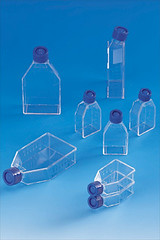Det nye Centre for Medical Science and Technology Studies (MeST) ved Københavns Universitet inviterer til åbningsevent torsdag den 2. december med forelæsninger af Sarah Franklin (“Life After In Vitro Fertilisation: Has biology become a technology?”) og Ken Arnold (“Art and Communication of Medical Science”).
Professor Sarah Franklin er en af verdens førende forskere inden for videnskabs- og teknologistudier. Hun er især kendt for sine banebrydende studier af reagensglasmetoden (IVF), kloning, mbryonforskning og stamcelleforskning. Hendes seneste bog handler om det klonede får, Dolly. Hun er en skarp analytiker, som kombinerer STS med antropologi, kønsforskning og kulturstudier. Hun har siden 2004 været professor på London School of Economics, hvor hun sammen med Nicolas Rose har ledet STS – centret BIOS.
Dr. Ken Arnold er Head of Public Programmes ved Wellcome Trust, hvor han bl.a. har været ansvarlig for fondens store satsning på samarbejdsprojekter mellem forskere og kunstnere. Han er primært kendt som initiativtager til og kreativ leder af Wellcome Collection, som i løbet af få år er blevet én af verdens mest omtalte offentlige arenaer for biomedicinsk forskningskommunikation. I 2010-2013 er han Visiting Professor ved Medicinsk Museion for at bidrage til arbejdet med at opbygge et forsknings- og praksisprogram for’public engagement with medical science and technology’.
Arrangementet finder sted torsdag d. 2. december 2010, kl. 15:00- 17:30 i det anatomiske teater, Medicinsk Museion, Bredgade 62, København K
Det vil være reception efter festforelæsningerne, med tid til at diskutere samt nyde et glas vin og lidt mad.
Centret, der markerer en ny satsning indenfor medicinske videnskabs- og teknologistudier i Danmark, er et samarbejde mellem forskere ved Afdeling for Sundhedstjenesteforskning og Medicinsk Museion, som begge er afdelinger ved Institut for Folkesundhedsvidenskab under Det Sundhedsvidenskabelige Falultet, Københavns Universitet. Centret ledes af professor Lene Koch, med professor Thomas Söderqvist, professor Signild Vallgårda, lektor Mette Nordahl Svendsen, lektor Klaus Høyer, adjunkt Jan Kyrre Berg Olsen Friis, adjunkt Henriette Langstrup samt en række postdocs og ph.d.-studerende som medlemmer.
Centrets formål er at tilbyde seminarer til all interesserede og valgfagskurser til studerende. Det indgår også i et tæt samarbejde med det nyetablerede forskeruddannelsesprogram for Medical Science and Technology Studies ved Det Sundhedsvidenskabelige Fakultet, der ledes af Thomas Söderqvist.


 Goodsell, who is based at the
Goodsell, who is based at the  For example, Goodsell’s pseudocolor depiction of HIV — shown here in cross-section and incorporating all current information from structural biology and electron microscopy — gives a much-maligned pathogen a unique artistic quality.
For example, Goodsell’s pseudocolor depiction of HIV — shown here in cross-section and incorporating all current information from structural biology and electron microscopy — gives a much-maligned pathogen a unique artistic quality. Jeg var lige ved at sætte tastaturet i backgear i går da jeg fik en mail i indbakken, der
Jeg var lige ved at sætte tastaturet i backgear i går da jeg fik en mail i indbakken, der  This year’s
This year’s  Here’s the list of speakers at the 15th biannual conference of the European Association of Museums for the History of Medical Sciences, to be held at Medical Museion, 16-18 September 2010, on the theme ‘Contemporary medical science and technology as a challenge to museums´.
Here’s the list of speakers at the 15th biannual conference of the European Association of Museums for the History of Medical Sciences, to be held at Medical Museion, 16-18 September 2010, on the theme ‘Contemporary medical science and technology as a challenge to museums´.